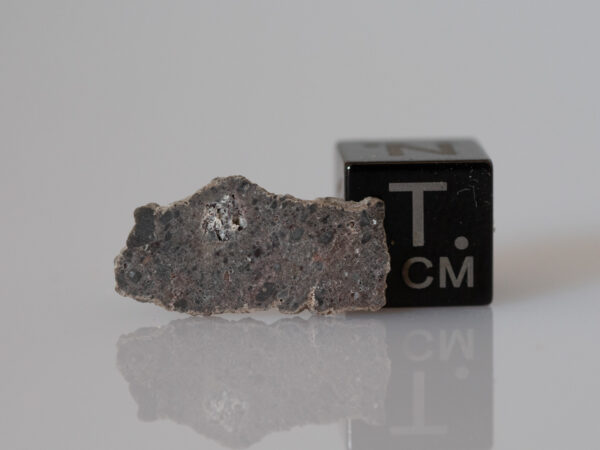Description
On offer: a wonderful 2.48g fragment with crust of this rare meteorite fall.
Dimensions: ~16 x 14 mm
What you get: this 2.48g fragment with crust , a membrane box, a label and signed Certificate of Authenticity.
Type: brecciated eucrite
Country: Spain
Date of fall: May 10, 2007
Total mass: 500 g
Puerto Lápice 39°21’N, 3°31’W
Ciudad Real, Castilla-La Mancha, Spain
Fall: 10 May 2007, 19: 57 local time (UT +2h)
Achondrite (eucrite, brecciated)
History: At 17: 57 P.M. (UT) on May 10, 2007, a brilliant fireball of absolute magnitude -14 ± 4 was widely seen all over Spain. The fireball traveled from the south to the north and experienced various explosions along its trajectory. The Spanish Fireball Network (SPMN) and numerous images taken by observers documented the fall.
Physical characteristics: The first specimen (5.7 g) was found in an olive grove by Thomas Grau on June 3 at 39°21.893’N, 3°31.321’W. Other specimens were found nearby on June 8-9 by Thomas Grau (4.5 g, 3.0 g, 3.8 g, and 5.8 g), on June 13 by Jose Vicente Casado (2.7 g), on July 4 by Jose Maria Madiedo (Univ. Huelva) (6.0 g) and Jose Vicente Casado (1 g), and on July 11 by Francisco Ocaña (5.9 g). Another 22 pieces have been found since then, and the total mass recovered is 0.5 kg. All the specimens exhibit wrinkled and extremely shiny black fusion crusts.
Petrography and Mineral compositions: (Jordi Llorca and Ignasi Casanova, UPC; Josép M. Trigo-Rodríguez, CSIC; Addi Bischoff, IfP). The meteorite exhibits areas with basaltic texture as well as recrystallized portions. Low-Ca pyroxene (Fs59-61; range Fs53-65; Fe/Mn30.6±0.9) and the mean composition of plagioclase (An86.5; range An77-93). Bulk Fe/ Mn = 34.5.
Classification: Achondrite (eucrite, brecciated); moderate shock, no weathering.
Type specimens: A total sample mass of 22.1 g is on deposit at the UPC.
Submitted by: J. Llorca, CSIC.







